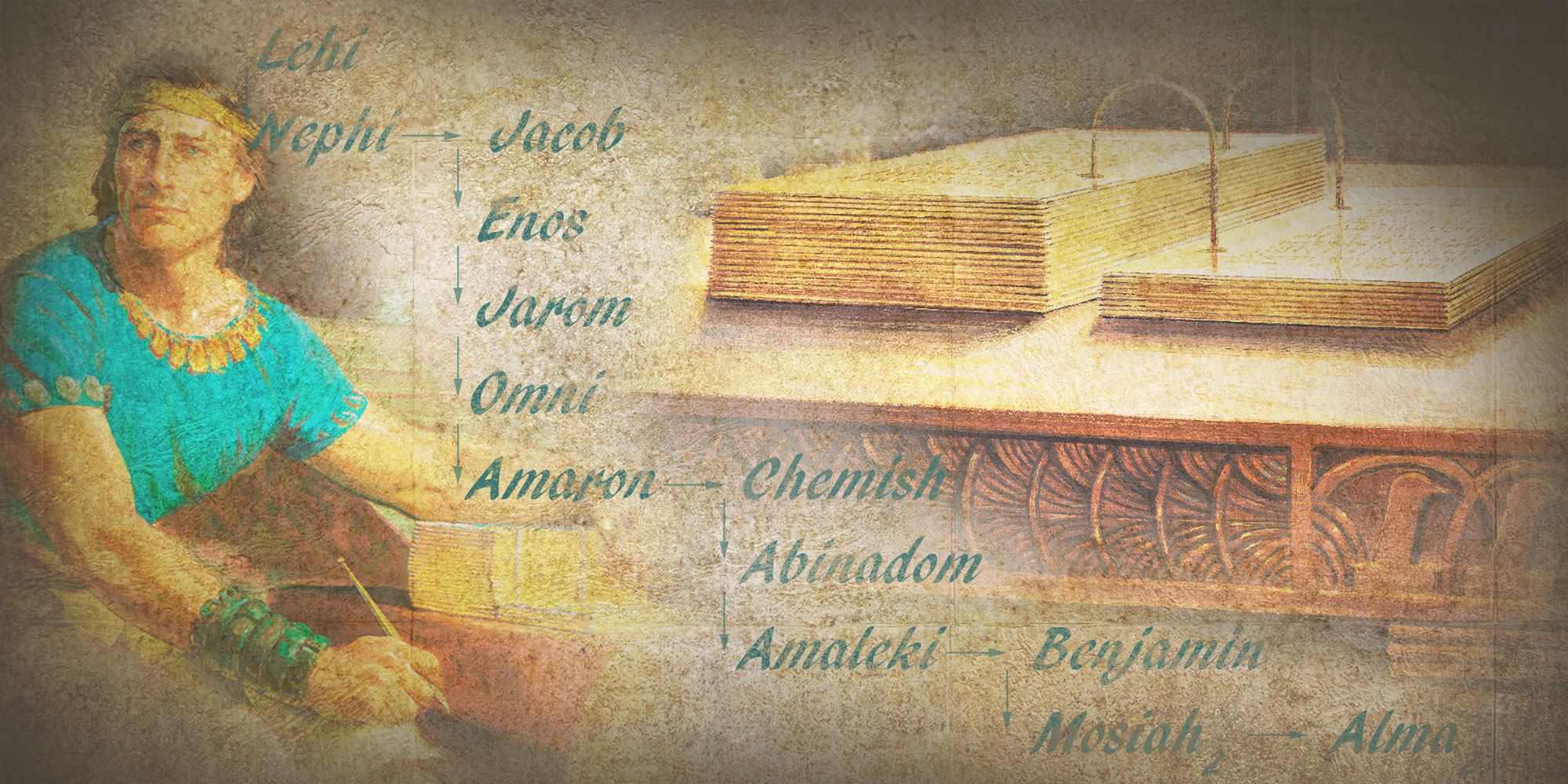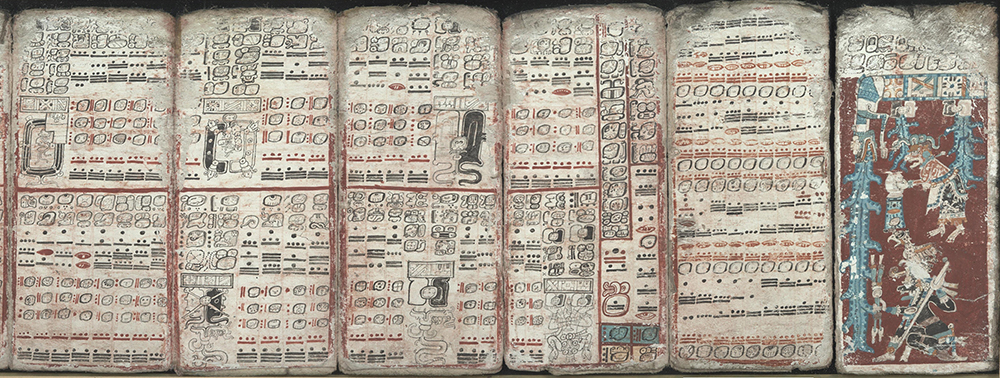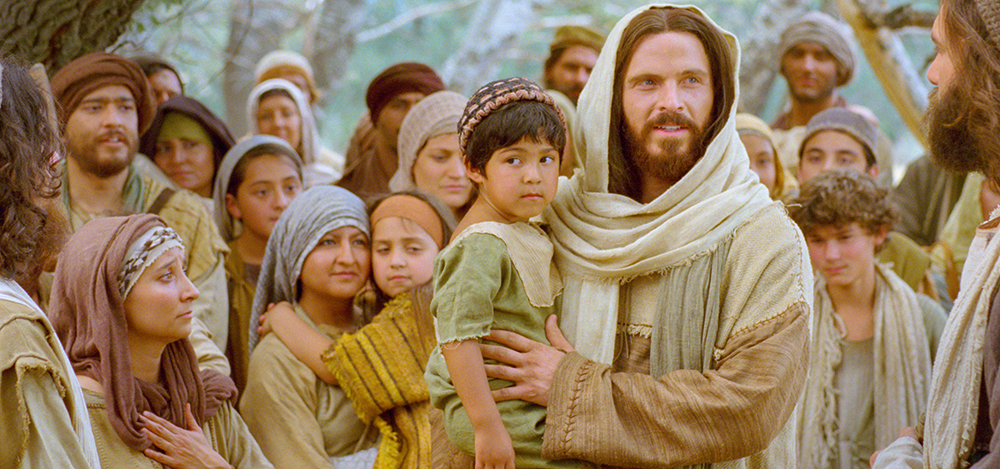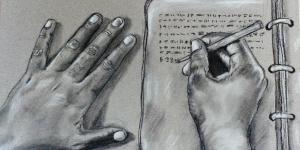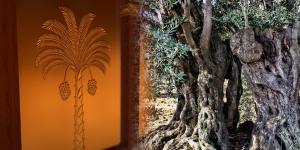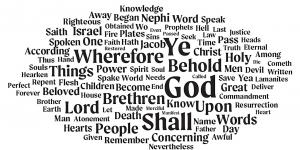You are here
Why Were Genealogies Important to Book of Mormon Peoples?

Jarom 1:1
The Know
Both Jarom and Omni explicitly state that genealogy is one of their main reasons for writing on the small plates (Jarom 1:1; Omni 1:1). Genealogy was certainly important to Book of Mormon writers, especially the small plates authors. It was one of the reasons given for recovering the plates of brass, but Nephi gives few genealogical details when he reports the contents of those records (1 Nephi 3:3; 5:14: 6:1).
Jarom and Omni are also sparse on genealogy. Mothers and extended family members are never mentioned, only the immediate father-to-son lineage. “Neither Jarom nor Omni … record a genealogy,” observed Brant A. Gardner. “The only genealogical information,” Gardner continued, “is Jarom’s identification of his father’s name. Why is the one thing that the authors understood as the primary reason for keeping the record in the first place missing?”1
Apparently Nephi did not think the small plates were an appropriate place for long lists of forefathers (1 Nephi 6:1). This would seem to be at odds, however, with Jarom and Omni’s declarations that they wrote “to preserve our genealogy” (Omni 1:1). How were they preserving genealogy without recording an extended genealogy?
As Gardner has pointed out, “They do include genealogy insofar as they indicate their connection to the lineage that is caring for the small plates.”2 Each record keeper, both on the small plates and in Mormon’s abridgement, did give enough information for their lineages to be reconstructed; however, they are sometimes hard to keep straight. John W. Welch reasoned, “Keeping genealogy may have been a byproduct of this record-keeping tradition.”3
Tracing the lineage, as opposed to giving a expansive family history, was of supreme importance to ancient authors in both the Old and New Worlds. In 1976, John L. Sorenson noted, “In general terms we could expect a Mesoamerican codex to be … an annal of major events affecting a ruling lineage,” and the “Book of Mormon is an account of a lineage of priest-rulers” and “its scope is the much more limited one of recounting events mostly significant for a particular lineage.”4
In 1985, Sorenson began to more fully sketch out the concept of the Book of Mormon as a “lineage history.”5 This was expanded on in 1997,6 and finally in 2013 Sorenson provided his fullest comparison of the Book of Mormon and Mesoamerican lineage histories.7 “A lineage history records facts and notions significant for establishing the sociopolitical status of a group whose members claim descent (real or fictive) from a common ancestor.”8 By definition, genealogy was important to lineage histories. The small plates had become the Jacobite lineage history, and thus identifying their lineage was important.
In Mesoamerica, lineage histories were kept by priest-scholars, served as symbols of power for the ruling elite, contained the group’s origin story (which provided legitimacy to the elite lineages), and would be used to foretell the future.9 The Book of Mormon served these same functions in Nephite society.10 Sorenson believed, “The Book of Mormon makes clear that it is such a lineage history.”11
The Why
Lineage continues to be important throughout the Book of Mormon, as evidenced by Mormon's own declaration of Lehite descent (3 Nephi 5:20). Understanding the Book of Mormon as a lineage history has important implications. As Sorenson noted, “The ‘history’ kept by a lineage is not, of course, a comprehensive account of everything taking place in the area.” Its concern is more limited to the things deemed important to that lineage group and impacting them most. Sorenson summarized:
All this information boils down to the fact that the Book of Mormon is a partial record of events, emphasizing what happened to one group of people, put in their own ethnocentric terms, in the midst of other peoples each with its own version of events.12
The Book of Mormon itself seems to reflect the reality of competing lineages with alternative histories.13 “The difference,” Sorenson explained, “is important if we are to relate the [Book of Mormon] to archaeological finds.”14
Instead of expecting clear and obvious archaeological correlations, the relationship to a lineage history is subtler. Sorenson pointed out examples from Mesoamerican lineage histories, which “may have been accurate from the point of view of the intruding elite,” but “the tradition they passed down did not reflect the broader flow of events in the geographical area and certainly failed to have a noticeable impact on the archaeological record."15
This also sheds light on the importance of keeping personal and family histories today. Personal and family histories preserve not only the warm memories of important family occasions, but also transmit traditions and heritage to new generations.
While Book of Mormon writers took pride in the noble mortal lineage, they taught that the most important lineage was the divine lineage of Christ. The people become "the children of Christ" and are thereby "made free" (Mosiah 5:7-8); Christ's seed are those who listen to and follow the prophets, thus becoming "heirs of the kingdom of God" (Mosiah 15:11). This divine genealogy was not limited to the royal or priestly families, but was extended to all who would come unto Christ. This remains true today, as those who covenant to follow the Savior, according to Elder Dallin H. Oaks, "In spiritual and figurative terms...become the sons and daughters of Christ, heirs to his kingdom."16
Further Reading
John L. Sorenson, Mormon Codex: An Ancient American Book (Salt Lake City and Provo, UT: Deseret Book and Neal A. Maxwell Institute for Religious Scholarship, 2013), 198–218.
John L. Sorenson, “The Book of Mormon as a Mesoamerican Record,” in Book of Mormon Authorship Revisited: The Evidence for Ancient Origins, ed. Noel B. Reynolds (Provo, UT: FARMS, 1997), 418–429.
John L. Sorenson, An Ancient American Setting for the Book of Mormon (Salt Lake City and Provo, UT: Deseret Book, 1985), 50–56.
- 1. Brant A. Gardner, Second Witness: Analytical and Contextual Commentary on the Book of Mormon, 6 vols. (Salt Lake City, UT: Greg Kofford Books, 2007–2008), 3:26, capitalization altered.
- 2. Gardner, Second Witness, 3:26.
- 3. John W. Welch, “The Father’s Command in to Keep Records in the Small Plates,” FARMS Preliminary Report (September 1984), 8.
- 4. John L. Sorenson, “The Book of Mormon as a Mesoamerican Codex,” Newsletter and Proceedings of the SEHA 139 (December 1976): 3.
- 5. John L. Sorenson, An Ancient American Setting for the Book of Mormon (Salt Lake City and Provo, UT: Deseret Book, 1985), 50–56.
- 6. John L. Sorenson, “The Book of Mormon as a Mesoamerican Record,” in Book of Mormon Authorship Revisited: The Evidence for Ancient Origins, ed. Noel B. Reynolds (Provo, UT: FARMS, 1997), 418–429.
- 7. John L. Sorenson, Mormon Codex: An Ancient American Book (Salt Lake City and Provo, UT: Deseret Book and Neal A. Maxwell Institute for Religious Scholarship, 2013), 198–218.
- 8. Sorenson, Mormon Codex, 198.
- 9. Sorenson, Ancient American Setting, 51.
- 10. Sorenson, Mormon Codex, 198–218.
- 11. Sorenson, Ancient American Setting, 51.
- 12. Sorenson, Ancient American Setting, 55.
- 13. Sorenson, “The Book of Mormon as a Mesoamerican Record,” 420–422.
- 14. Sorenson, Ancient American Setting, 56.
- 15. Sorenson, Ancient American Setting, 55.
- 16. Elder Dallin H. Oaks, “Taking upon Us the Name of Jesus Christ,” April 1985 General Conference Address, online at lds.org.
KnoWhy Citation
Related KnoWhys
Subscribe
Get the latest updates on Book of Mormon topics and research for free

